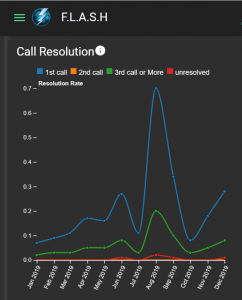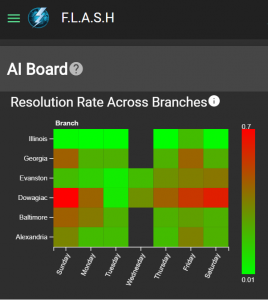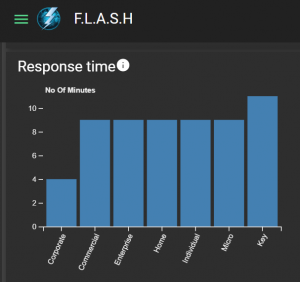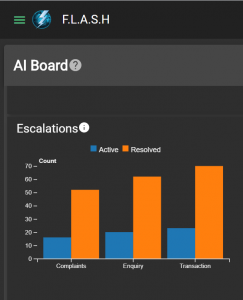Digital technologies have been helping banks and financial institutions to seize new markets, grow the business, and cut costs by providing a competitive advantage. We see tremendous changes in the banking and financial services industry impact businesses and in an attempt to seek insights from business leaders from the industry, our Co-Founder and SVP Mr. Sridharan J. S has a conversation with Mr. Palani Balasubramanyam Nama, Head of Open Innovation and Digital Transformation, Societe Generale, who has over 21 years of experience working with Innovation & IT divisions of Investment Banks, Financial Institutions and European/American Multinationals, about the state of AI and other technologies in banking, in our exclusive ‘Feature Corner’. As the Head of Trade Execution, Palani is also accountable for the IT & OPS team ensuring on-time and secure trade execution across global exchanges, efficiently from India.
Sridharan – Being in the banking industry for more than a decade, tell us how banks fostered innovation before COVID and how the perspective has changed during this situation?
Palani – Pre COVID-19, innovation in banking was more focused on internal optimization, focused increasing digital footprint for efficiency, or improving customer journeys.
COVID has compelled to accelerate the adoption of contactless service delivery for customers, at a rapid pace. This constraint forced banks to partner with external eco-system for rapid transformation, to provide neo banks equivalent digital experience for customers. Apart from service channels, there is quite a bit of investment being done on employee experience, like enabling them to work from home, across multiple secure digital channels and collaboration tools.
Sridharan – Approximately what percentage of spend, do you know of, that banks spend on IT costs annually?
Palani – Large banks spend between 5 to 10%, small & medium banks spend between 20 to 30% of their total spend on IT costs.
Sridharan – Approximately What percentage of banks’ transactions or what areas are automated?
Palani – Above 70% of P2P transactions are automated, however, B2B transactions hover between 30 to 40%. B2B transaction STP % is catching up in the recent past with the evolution of Machine Learning & Smart Automation.
Sridharan – As more devices connect to the internet and the concept of the Internet of Things gaining rapid momentum, what are the preparations banks are involved in the rapid increase in equipping themselves with the huge amount of data generated from the devices?
Palani – BFSI has been slow in the adoption of IoT before COVID, given security threats and central bank regulations. However, post-pandemic, banks are more open to adopting digital channels to deliver contactless & remote client experience.
This unprecedented disruption has increased data volumes multifold. Most of the banks have established internal data analytics teams to address basic data processing needs. Despite interest in partnering with external partners, there are roadblocks to be addressed before it can become reality, especially around secure data sharing, multiparty computation & adherence to regulatory norms (GDPR).
Sridharan – Data, being the most important factor for the digital transformation for banks, what technologies are used to leverage data to meaningful insights for smarter decisions?
Palani – Large BFSI enterprises have multiple tech stacks based on needs. However, they have well defined IS strategies guiding the usage of tech stacks based on problem patterns being addressed.
While exploring partnerships with tech giants like ORACLE, Teradata, or IBM, there is an intrinsic push to adopt opensource tech stacks, to ensure open standards and cost optimization.
Sridharan – Do you think banks are struggling with the rapidly changing technological landscape in terms of which technologies to adopt and which ones not to?
Palani – It is a challenge to keep up with fast-paced Technology landscape evolution for any organization. It is more complex in BFSI given constraints around tech choices to be made keeping in mind the security and reliability of services. In BFSI, business capabilities and security take precedence over technology grandeur.
There are few instances of large banks partnering with external partners to disruptive technology transformation, however, results so far haven’t been very encouraging. BFSI transformations demand as business acumen and technology expertise. External partners tend to be good at technology expertise, however most of the time they lack business acumen.
Sridharan – AI has been long seen as the next big thing in the banking and financial industry be it in the area of planning, cost-saving, customer experience, fraud prevention, or anti-money laundering. What do you see as the future of banking given the exponential growth in IoT devices, cloud computing with Artificial intelligence capabilities?
Palani – AI, so far has been capable of helping in raising proactive alerts, simplifying decision making, and processing of large datasets. however, it is far from autonomous process execution or decision making, which limits the full-scale unsupervised deployment of AI-driven process flows, which in turn would help increase the straight-through processing rate.
Necessity is the mother of invention. Pandemic has increased BFSI’s appetite to adopt technologies like IoT, Cloud computing, and AI. The exponential growth of these technologies should be complemented by the rapid hardening of enterprise cybersecurity strategies, without which, banks may be hesitant to leverage the full potential of emerging technologies.








